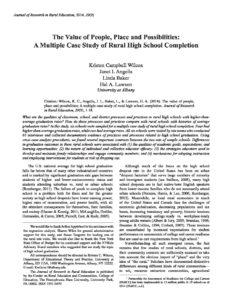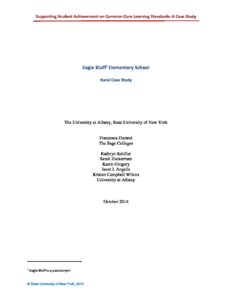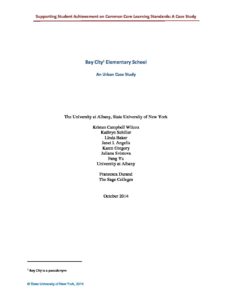Publication Year: 2014
Discussion of findings from rural high schools that graduate students at higher rates than comparison districts.
What are the qualities of classrooms, school, and district processes and practices in rural high schools with higher-than-average graduation rates? How do these processes and practices compare with rural high schools with histories of average graduation rates? In this study, six schools were sampled for a multiple case study of rural high school completion. Four had higher-than-average graduation rates, while two had average rates. All six schools were visited by site teams who conducted 63 interviews and collected documentary evidence of practices and processes related to high school graduation. Key findings include on graduation rate success include: (1) the qualities of academic goals and learning opportunities; (2) the nature of individual and a collective educator efficacy; (3) the strategies educators used to develop and maintain family relationships and engage community members; and (4) mechanisms for adapting instruction and employing interventions for students at risk of dropping out.
This case is one part of a comparative study of New York State elementary schools designed to investigate implementation of Common Core Learning Standards (CCLS) and the Annual Professional Performance Review (APPR) as they relate to student performance outcomes on CCLS-aligned assessments. The study sample included both odds-beating and typically performing schools.
The Common Core Odds-Beating Studies were developed in collaboration between a team of researchers at the University at Albany and the New York State Education Department. The study began in the recognition that there was a need for research investigating the process and practices in schools with relatively better outcomes on the Common Core-aligned assessments first implemented in the state in the 2011-2012 school year. At the time of this study, there had been no systematic examinations of the ways a variety of schools have approached and responded to the Common Core Learning Standards (CCLS) and the Annual Professional Performance Review (APPR) systems, both part of the Race to the Top reform agenda.
This case is one part of a comparative study of New York State elementary schools designed to investigate implementation of Common Core Learning Standards (CCLS) and the Annual Professional Performance Review (APPR) as they relate to student performance outcomes on CCLS-aligned assessments. The study sample included both odds-beating and typically performing schools.
The Common Core Odds-Beating Studies were developed in collaboration between a team of researchers at the University at Albany and the New York State Education Department. The study began in the recognition that there was a need for research investigating the process and practices in schools with relatively better outcomes on the Common Core-aligned assessments first implemented in the state in the 2011-2012 school year. At the time of this study, there had been no systematic examinations of the ways a variety of schools have approached and responded to the Common Core Learning Standards (CCLS) and the Annual Professional Performance Review (APPR) systems, both part of the Race to the Top reform agenda.



